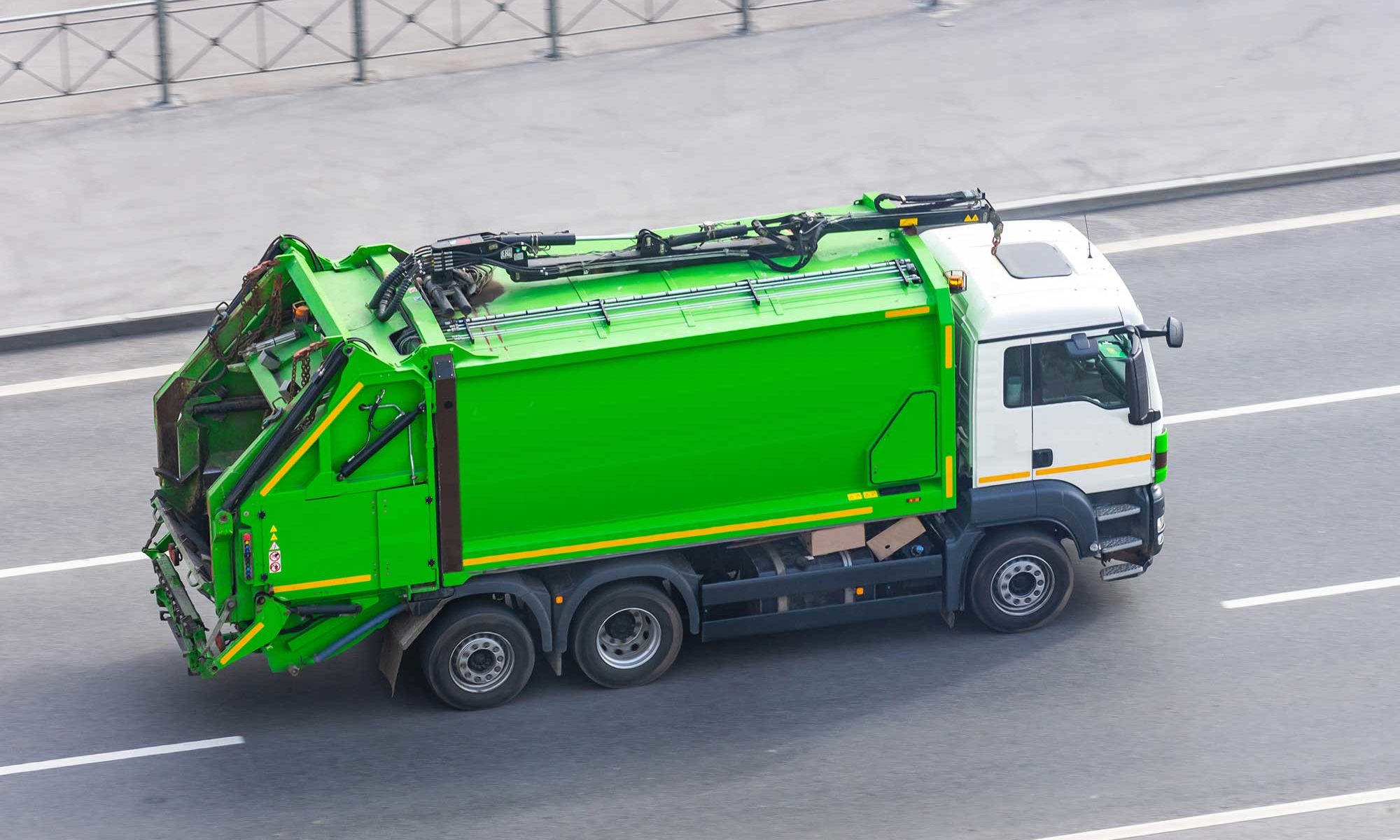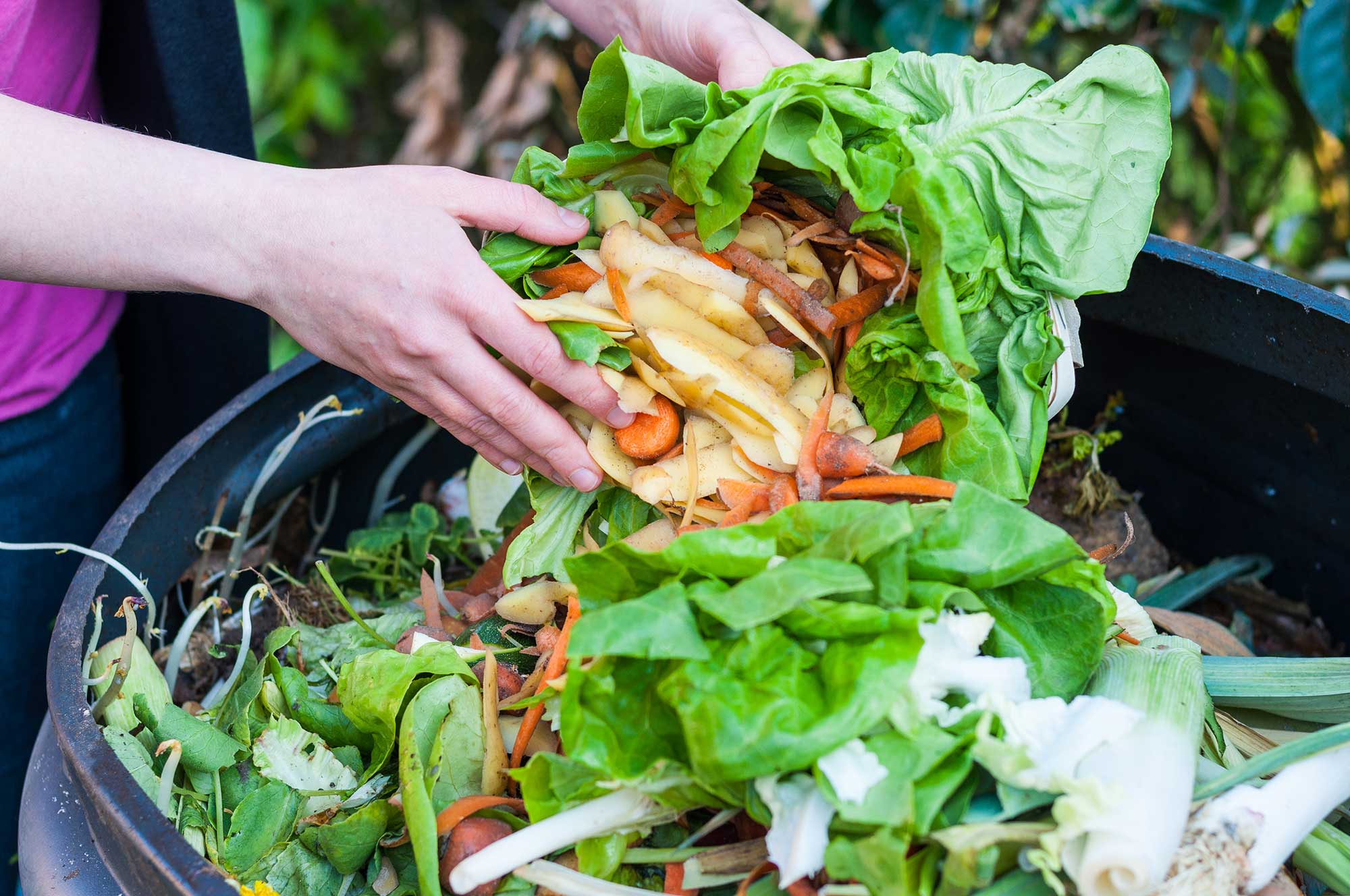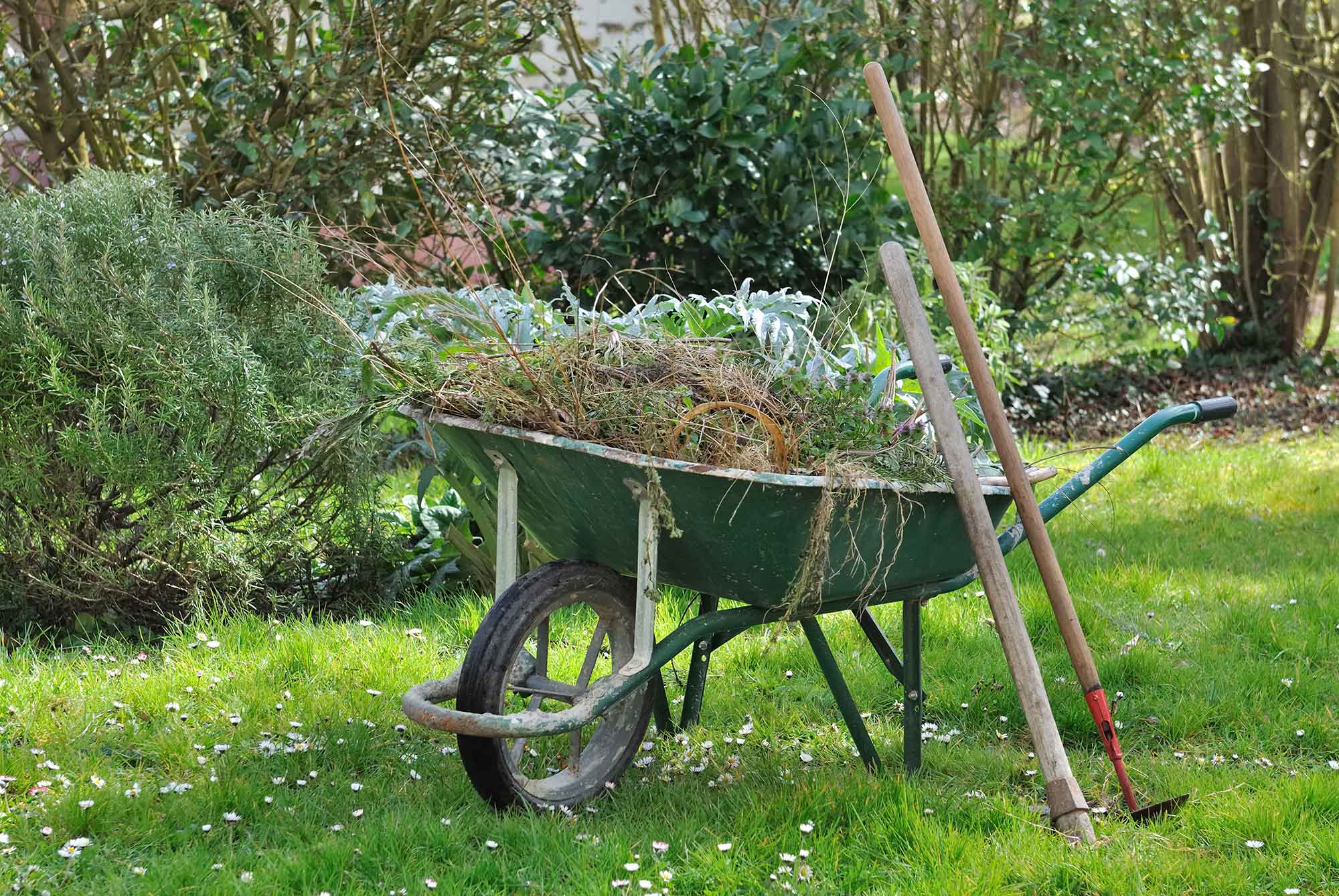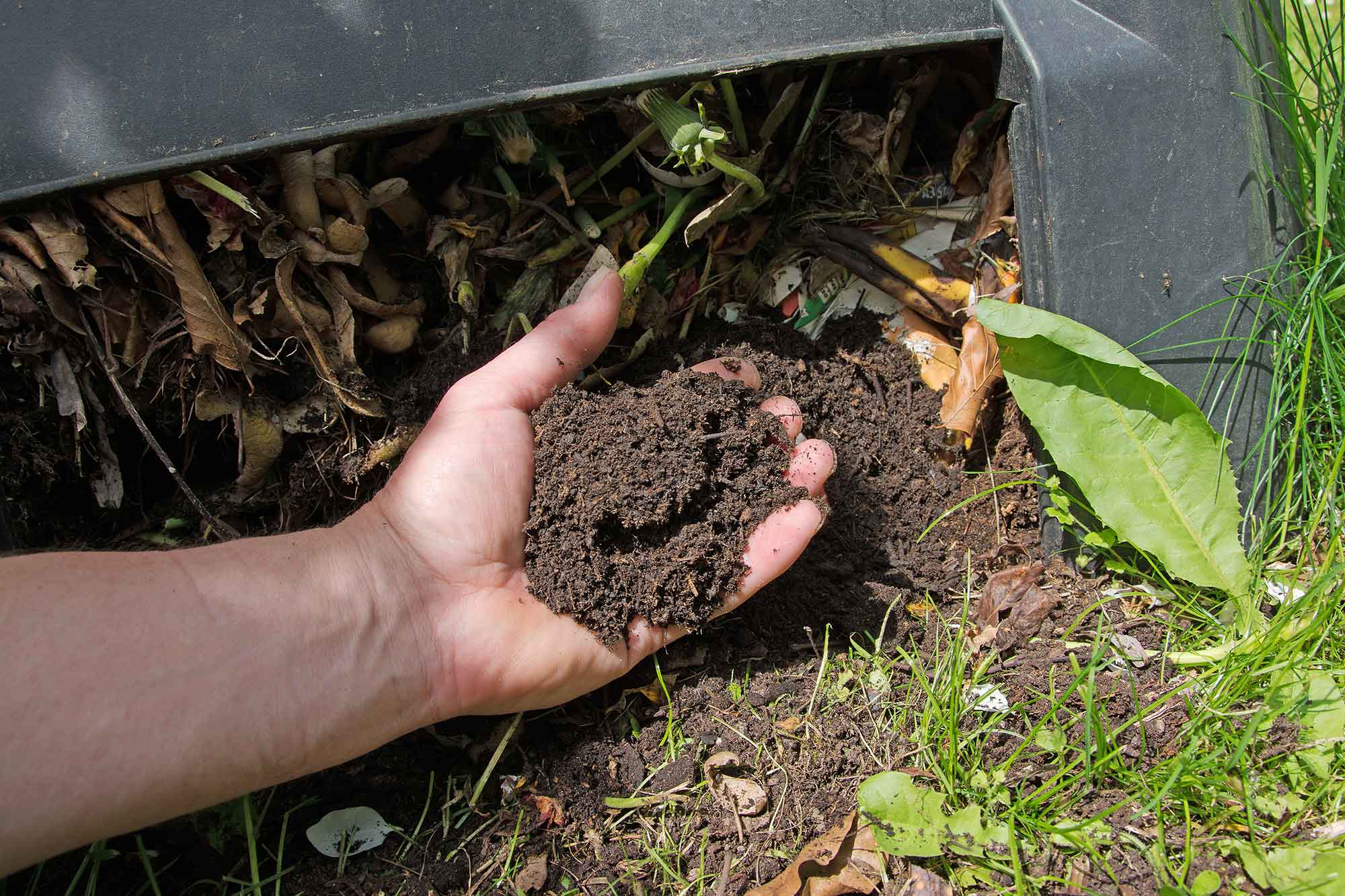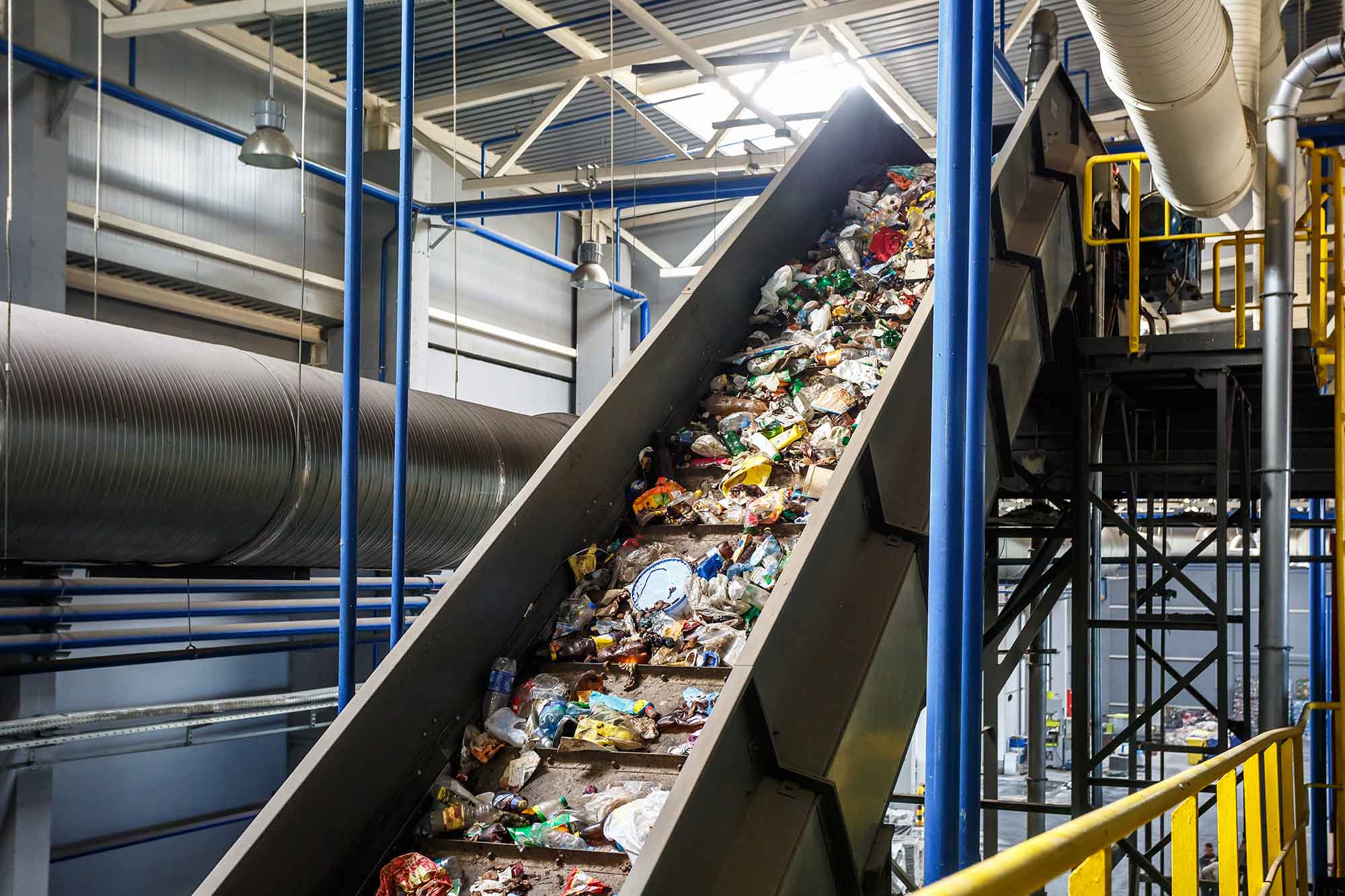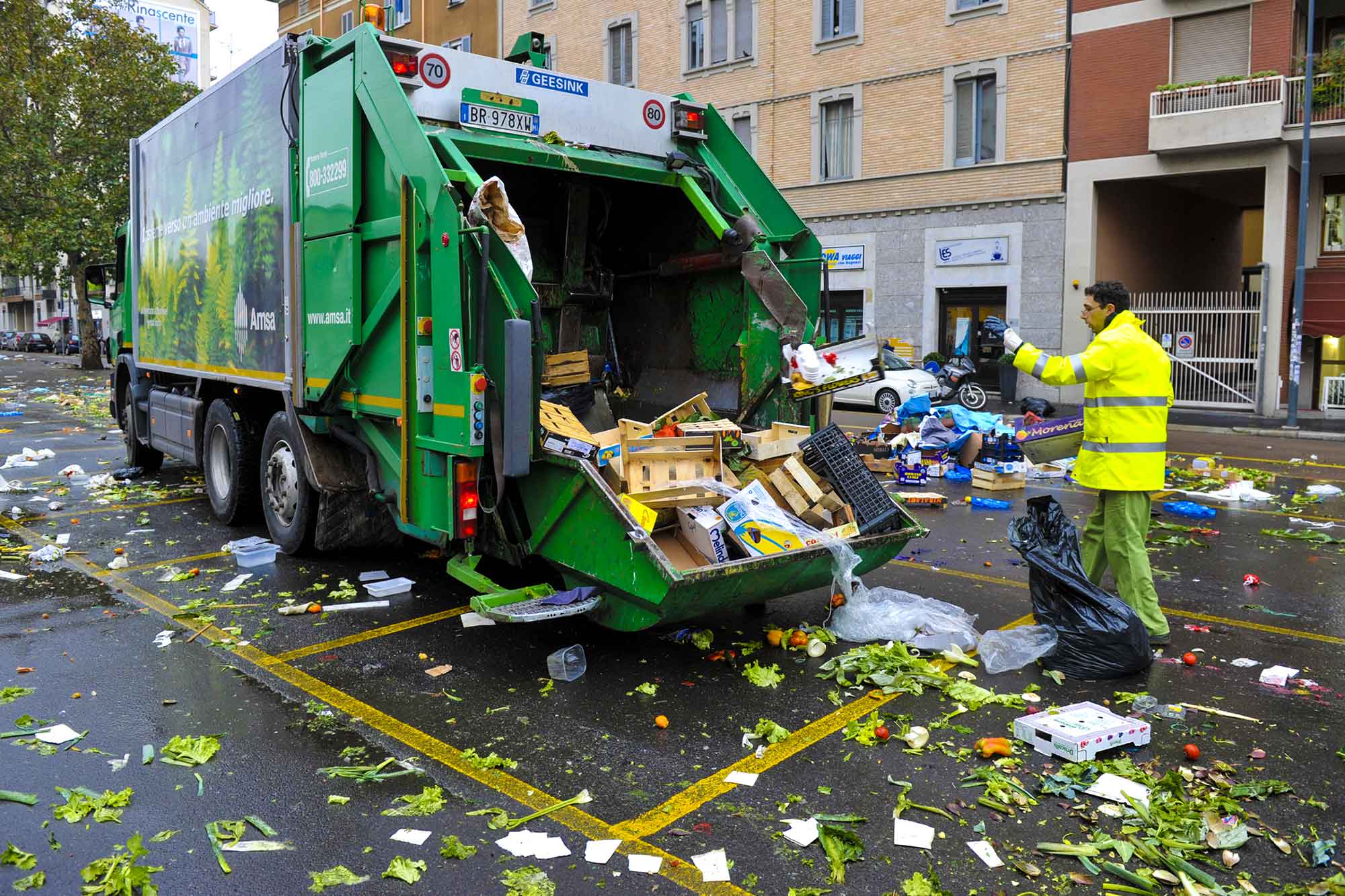It is important to monitor how much bio-waste is available in Europe. From 1 January 2024, separate collection of bio-waste will be mandatory, according to the new European Waste Framework Directive (WFD). The European Commission’s ‘Circular Economy Package‘ sets the target to recycle 65% of all waste by 2035. To be able to recycle effectively, it is necessary that waste flows are as high-quality and clean as possible. Separate collection systems for bio-waste are necessary to achieve this.
Healthy soil
Bio-waste can be used for various applications. First of all, the recovery of organic material from waste is important to keep the soil healthy. Due to changing land use, intensive farming methods and climate change, soil quality and thus productivity of soil in Europe is deteriorating further and further. Due to a lack of organic material, the soil retains less water, the content of nutrients and microbial activity decrease, as well as the capacity to store carbon. Compost from bio-waste can stop or even reverse the current processes of erosion, eutrophication and desertification.
In addition, the WFD and other EU directives encourage the use of bio-waste as feedstock for the bio-based industry. It can be converted into high-quality materials and products, biopolymers, chemicals and additives. BIC is committed to the development and commercialization of innovative biorefining technology for these renewable raw materials. In doing so, it aims to strengthen the competitiveness of European industry, create jobs, reduce dependence on fossil resources and contribute to climate neutrality.
Big differences
To be able to use bio-waste as a feedstock, it must first be clear how much of it is available in Europe, and how it can be effectively collected. The researchers examined EU countries as well as the United Kingdom and Norway (the EU 27+). They noted that 71kg of bio-waste is collected per inhabitant in the EU27+. Just over a quarter (18kg) consists of food waste, the rest of garden waste. However, these are averages and the numbers vary widely across countries, because the intensity and collection methods differ.
With 226 kilos of bio-waste captured per inhabitant, Denmark leads the European rankings in terms of the quantity captured, followed at a distance by France (128 kg) and Germany (125 kg). The Netherlands and Belgium are closer to the European average, with 85 and 82 kg respectively. The lowest collection rates were found in Croatia (7kg), Portugal (11kg) and Estonia (16kg).
Looking at the share of food in the total amount of bio-waste, it is striking that the differences are also large: in Bulgaria this is 0%, in Italy no less than 62%. Most countries (24 out of 29 in the study) are just above average with a 20% share.
Growth potential
The figures become more interesting when we look at the potential per country to increase the amount of bio-waste collected. In the EU 27+, only 34% of all bio-waste is currently collected, leaving room for a growth increase of 66%, theoretically. Of all food waste produced, only 16% is collected. This could mean 84% growth potential.
Here, too, the differences between countries are large. A striking highlight is, for example, Cyprus. At first sight there seems to be plenty of room for growth, with just 19kg of collected bio-waste per inhabitant. However, this is already 83% of the total amount of bio-waste produced in Cyprus.
Notable outliers are Belgium and Portugal, which collect only 3% and 4% of all bio-waste produced, respectively. The Netherlands is slightly above the European average with 41% of the total bio-waste potential captured.
The researchers point out that reaching the theoretical potential (100% collection) is never really feasible, partly because waste streams can be polluted, or because people may unknowingly make mistakes when separating waste, so that bio-waste ends up with residual waste. There are also people who use bio-waste for composting at home. A maximum collection percentage of 85% is more realistic. It means there is still a growth potential of 41.5 million tons.
Best practices
The processing of bio-waste into biobased materials is strongly promoted by the Bio-based Industries Joint Undertaking (BBI JU). “The bio-based sector is already valorising bio-waste in smart and efficient processes with zero-waste objectives. Several projects funded by the ‘BBI JU demonstrate how innovation in our sector can convert bio-waste into high-value bio-based products.” says Dirk Carrez, BIC Executive Director. “The bio-based industries seek to achieve a resource-efficient and zero-waste society as identified in our Vision. The planned EU public-private partnership – Circular bio-based Europe – will help further realise this.”
One of the waste recovery projects BBI JU is involved in is the AgriMax project, which shows how high-quality products can be made from food waste streams. In this case, they mainly come from agriculture and the food processing industry.
Another example is the VAMOS project, which produces second-generation sugars from the organic fraction in mixed domestic residual waste or waste rejected from sorting and recycling processes.
Finally, the URBIOFIN project aims to demonstrate the technical, commercial and environmental viability of converting the organic fraction of municipal solid waste on a semi-industrial scale. It will create chemical building blocks, biopolymers and additives by applying an urban biorefinery concept to bio-waste.
Some of these projects are still in the development phase but have the potential to grow into important commercial activities, depending on a reliable and sufficiently large supply of feedstocks from bio-waste. The potential is present in Europe, as this research has shown.
It is now up to partners in the waste industries to organize more effective collection systems. For example, through implementation of an intensive door-to-door collection of food waste, as is already the case in the densely populated city of Milan (Italy). Since starting the collection in 2014, the local waste company has managed to collect 105 kg of food waste per person. This is a surprising amount, given that 120 kg of food waste is generated per person. The degree of contamination of the collected waste is low, only about 5%. Collection costs are high, but acceptable in view of the yield.
In the Spanish region of Catalonia, the collection of food waste is promoted by introducing a land fill tax. This makes bio-waste collection and treatment costs cheaper than disposal into landfill or incineration. As a result, almost all municipalities have opted for separate collection of bio-waste and the collection rate is gradually increasing.
In France, the Reseau Compost Plus network was set up in 2007, which promotes the separate collection of food waste. The network currently comprises 28 agglomerations with a total population of 9 million. Reseau Compost Plus is also active in distributing information, guidelines and cost estimates. Moreover, it issues a quality label and regularly organizes local events on best
practices of separate collection.
This article was written in collaboration with the Bio-Based Industries Consortium.
Image above: aapsky/Shutterstock
